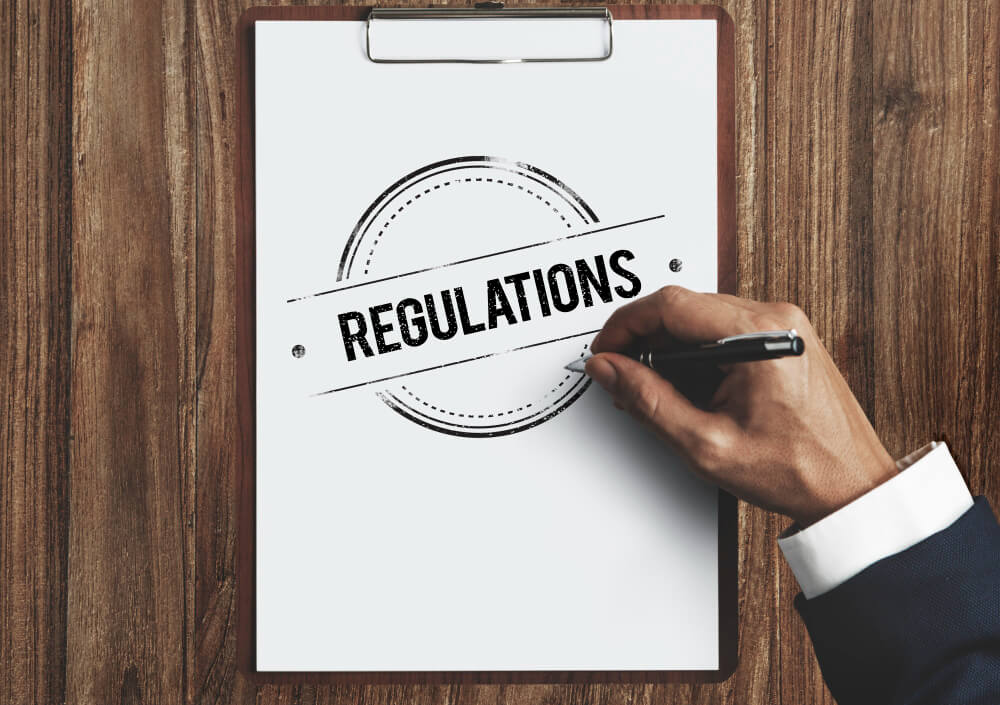Performance Measurement for any Application: We’re Doing Great! How Come We’re
Not Performing?
© Copyright Carter McNamara, MBA, PhD, Authenticity Consulting, LLC. Adapted
from Field Guide to Consulting and Organizational Development
Suggested Pre-Reading
Overview
of Performance Management Process for any Application
Sections of This Topic Include
Myth: “I’ll Know Results When I See ‘Em”
Training for Skills — or a Good Time?
What Are You Doing? What Should You Really Be Doing?
Some Reasons for a Performance Management System
Key Terms: Results, Measures and Standards
Performance Problem: Vague Priorities
Weighting Results to Convey Priorities
Measures: Some You Can Count and Some You Describe
Performance Problem: Inconsistent Desired Results Across
Many of Us Misunderstand Performance
You may be losing performance in your organization because you don’t really
understand what performance is. Certainly, if all employees are getting good
performance reviews from their supervisors once a year, then all must be fine,
right? Wrong! If the performance of the organization’s groups, processes and
employees do not contribute directly to organizational results, the organization
is not performing well. Neither are the employees or the processes. They’re
working hard, doing things right — but they’re not doing the right things.
Consider the following, rather simple story. The story points out the typical
problems that can come from not having a performance system in place. This story
is about a performance problem with employees, a trainer and an organization.
The story includes:
The Story
A Common Misunderstanding: “I’ll Know Results When I
See ‘Em'”
Employee Ed is a new employee at a print shop. He has been
hired to run a machine that prints out high-quality pictures.
The pictures go to other departments, including the Catalog Department,
to use in brochures, catalogs, advertisements, etc.
Ed’s new supervisor, Supervisor Sam, is new on the job, too.
He’s worked hard to get where he’s at. He was an expert at running
the collating machine. Sam’s machine took printed images from
machines like Ed’s and organized them into the Catalog Department’s
final product, a catalog.
Sam doesn’t like Ed at first. Ed looks just like Sam’s brother
whom Sam does not like at all. Still, as a new supervisor, Sam
tries to give Ed a chance.
Sam wants to be sure that Ed does a good job. He isn’t all
that sure what “good job” means, but he thinks he’ll
know it when he sees it. So Sam sends Ed to a course to learn
how to run the print machine. The description of the course said
students would learn all about the machine. That should work out
fine.
Training for Skills — or a Good Time?
Teacher Tom wants to convince supervisors to send employees
to his course. Tom claims the result from his course
is that each student will know how to run the printing machine.
Tom hasn’t really thought about how to achieve that result.
He knows a lot about the machine and likes to tell people
about it. So he thinks he’ll be a fine teacher.
Tom includes a lot of lectures in the course. He tells students
all about the machine’s history, some tough times he had learning
about the machine and how students can get a lot done with the
machine if they know what they’re doing. The rest of the time,
Tom tells students how to do the various procedures needed to
run the machine. After reviewing the last procedure, Tom tells
his students that the course is over. He tells them that they’ve
been a good audience, he enjoyed teaching them and hopes they
got a lot out of the course. Tom wants to be sure the course achieves
its result, so he has the students fill out a questionnaire.
Ed now likes Tom a lot and feels very good about the course
so he gives the course a very high rating. Tom seemed to know
a lot about the machine. Tom told a lot of jokes, the room was
nice and the materials were very impressive. With all the stuff
Tom told Ed, Ed now feels he could do anything with the machine.
Later that day, Ed tells Supervisor Sam that the course was very
good. Sam is very pleased about his decision and is glad the course
accomplished strong results.
What Are You Doing? What Should You Really Be Doing?
The next day, Sam briefly notices that Ed is much happier at
his job. “Great”, Sam thinks. “A satisfied employee
is a productive employee! Right?” (Wrong. Job satisfaction
doesn’t mean job performance. Some research indicates job satisfaction
can actually decrease productivity.)
Later that afternoon, Sam has more time to watch Ed at his
job. Soon Sam is horrified! It doesn’t seem like Ed knows what
he’s doing at all! Sam thinks to himself, “I knew Ed wouldn’t
work out! I just knew it!” Sam glances through several of
the prints from Ed’s machine. He finds one that’s smeared and
torn. Sam concludes that Ed didn’t learn anything at all. He confronts
Ed. “What are you doing? You’re slow and all your prints
are ruined! You’ve wasted the company’s money!” Ed feels
scared and stupid.
Sam and his company have a typical performance management problem.
If Sam had followed the principles of performance management,
he would have been more clear to himself and to Ed about what
Sam wanted as results from Ed’s job. Sam would have
been more clear about how he would measure Ed’s
results. Sam would have been more clear about how his expectations,
or performance standards, for Ed.
Teacher Tom has a similar problem. If he had thought more about
performance results, measures and standards, he would have thought
about what knowledge and skills his students would need to run
the machine. He would have thought about how he’d know if the
students could actually run the machine or not. Also, he would
have thought about how well students should be able to run the
machine by the end of the course. It’s likely that Tom would have
included time in the course for students to actually practice
on the machine. He would have included some way to test students’
skill levels to ensure they achieve Tom’s preferred result. He
would have included some way to later get supervisors’ feedback
about employees’ skills on the job. It’s very likely that Tom’s
course would have achieved its result: students who can operate
their machines to some specified performance standard.
Reasons for a Performance Management System
Back at work, Sam discusses the situation with his Boss Bob.
Sam wants to fire Ed — and do it now. Bob calmly disagrees. He
tells Sam, “We can turn this thing around. I’ll tell you
how.”
He begins to give Sam a broad overview of a performance management
system. “Basically, a performance management system is a
way to ensure we get results from all our employees. Heck, if
Ed’s teacher knew about performance, Ed might have learned something!
They don’t call it training any more, you know. They call it Performance
Technology or something like that.”
Sam interrupts, “Look. I can tell if Ed’s doing a good
job or not. I’ve got his job description. I’ve used the performance
appraisal form. Besides, I don’t feel good about those performance
appraisals. They’re just something you do once a year, usually
to fire somebody. They’re just paperwork. The guys are scared
of them. I dread them. I’m trying to build a team here!”
Bob responds, “You don’t understand. A performance system
is more than job descriptions. A job description lists what duties,
what responsibilities a certain job has. It doesn’t tell the employee
what results are really expected of him, what he’s supposed to
produce. It doesn’t keep telling you, the supervisor, how well
you expect the employee to be doing at his job. It doesn’t make
sure that what you’re doing is what your boss — and their boss’s
boss and their boss’ boss — want you to be doing.”
Bob went on to explain. “A performance system makes sure
we’re fair to our guys. They’re getting paid what they’re worth.
They know what we want from them. They know what we think about
what they’re doing. In the long run, all of us in the company
end up working toward the same thing. We’re all pulling on the
same rope. Maybe the biggest advantage is that we’re talking to
each other about what we’re doing, if we’re doing it right and
if it’s really what the company needs. Besides, we managers should
have to earn our own keep around here, too. I want you to take
part in our performance system, Sam. I’ll help you.”
Key Terms: Results, Measures and Standards
Bob explains, “In the performance system, the first thing
you do in figure out what results you want from the employee.
“Results are what you want Ed to produce so customers
can do their jobs well. For example, Ed’s internal customer, the
Catalog Department, needs high-quality prints to do its job. Right?
“Measures are what you use to know if Ed is achieving
the results or not. For example, how many prints is Ed making
in an hour? Are Ed’s prints smeared, are they torn?
“Standards are what you consider when thinking about how
well Ed is doing at his good job. For example, the standard for
“excellent” should be at least as many high-quality
prints an hour as your best people are producing.
“After we’ve decided the results, measures and standards,
we’ll work together to track Ed’s progress. We’ll make sure that
we’re all exchanging feedback around here, including with the
Catalog Department. That’s the most important part.
“Any needs that Ed might have, we’ll record on a development
plan. That might include more training. This time, we’ll make
sure that teacher knows about performance management!
Sam heard everything Bob said. He was skeptical, but he decided
to try the performance stuff anyway. Anyway, Bob was the boss.
Performance Problem: Vague Priorities
Over the next month, Sam thought more about what he specifically
wanted from Ed. He talked to Ed, too. They both decided that Ed
would shoot for 500 high-quality prints an hour, 8 hours a day,
Monday through Friday. High-quality would mean no smears or tears.
In fact, the Director of the Catalog Department would judge whether
Ed produced this result or not.
Sam was a little surprised at Ed’s reaction. He thought Ed
would be a little leery. Heck, Ed didn’t seem concerned at all.
He was actually excited! Sam actually felt better now, too.
Over the next week, Sam carefully considered the measurements
for Ed’s result. He realized that Ed really needed more training.
“Thank goodness I found this out now,” Sam thought.
Sam realized this whole situation wasn’t Ed’s fault. He reminded
himself that Ed was new, too. Sam talked to the Training Department.
They suggested that Ed go to a workshop where he could actually
get practice with the machine. Also, they helped Ed find some
free time on another machine during second shift. That way, Ed
could get in some more practice.
Ed attended the workshop. He told Sam it was hard, but he learned
a lot more about actually running the machine. He said the teacher
showed him several things that he could be doing a lot better.
Ed was eager to get back to work. Sam felt very relieved. This
performance stuff seemed to be working out — and it wasn’t nearly
as hard as he’d imagined.
Weighting Results
Several months later, Sam’s boss, Bob, told all employees that
he wanted them to take part in a Quality Circle. Sam told Ed all
about it.
Ed complained to Sam that he just wanted to run his machine.
That’s why he accepted the job. That’s what he wants to do.
Sam is now smart about results, measures and standards. He
sends Ed to a seminar on Quality Circles. Maybe that’ll get Ed
going in the Circles. Ed took the seminar and, sure enough, came
back all excited about Quality Circles. Now he spends a lot of
time around the coffee machine, telling other employees how great
Quality Circles are, where they started, etc.
Soon Sam tells Ed that he’s not running his machine anymore.
How’s he going to produce his results? Ed explains that he’s doing
his part for his Quality Circle. Ed complains that Sam needs to
make up his mind about what he wants Ed to do.
Sam goes back to Boss Bob, asking for advice. How can he get
Ed to work the machine and be a good member of the Circle?
Bob explains that Sam needs Ed to run the machine and take
part in the Quality Circle. Bob notices that Sam seems puzzled.
Bob explains, “Ed can do both: run the machine and be a good
Circle member. You just need to let him know what your priorities
are. Let Ed know how much time he can spend on his machine and
how much time in the Circle. Be as clear as you were before about
his results and how you’d measure them. In the performance system,
this is called weighting the results.”
Measures: Some You Can Count and Some You Describe
Sam nods that he understands Bob. “But how can I measure
what he does in Quality Circles?”
Bob explained, “Remember when we talked about measures?
There are a couple of ways to look at measures. You can count
them or you can describe them — hopefully you can do both. With
the machine, you could count the number of prints Ed produced,
right? You noticed if the prints were high-quality or not. High-quality
meant the images were clear and the paper was not torn. Right?”
Sam nodded.
Bob went on to explain, “About Ed’s Quality Circle, though,
it’s really hard to count something — at least not without going
crazy! Sure, you can count how many suggestions he makes. But
if you do that, he’ll be talking all the time and not saying anything!
What other ways can you realistically measure what Ed is doing
in his Circle”
Sam thought this for a minute. “Maybe I’m making this
harder than it is. How about if I notice the attendance record
for Ed, you know, you make sure he goes to meetings. I don’t want
to write down everything that Ed says. Heck, Ed only talks in
conclusions anyway!”
Bob responded that Sam seemed on the right track.
Sam explained the new situation to Ed. Ed seemed pleased. “That
straightens things out. Sure, I’ll try it”.
Performance Problem: Inconsistent Results Across the Organization
Over the next few months, Ed ran his machine just fine. His
Quality Circle made lots of good suggestions to Sam and Sam’s
boss, Bob. Soon, though, Ed and Sam notice that nothing was really
being done about the suggestions.
Sam confronted his boss, Bob. “You’ve got plenty of ideas
from us. How come nothing is being done about them?” Bob
replied, “I know. I’m wondering about that myself. I’ll find
out.”
Bob talked to his boss, Management Mike. Mike looked puzzled.
Then he remembered, “Oh, that’s right! The Quality Circles!
Yeah, those Circles are sure keeping people happy. Keep up the
good work, Bob!”
Bob replied, “I thought the Circles were to improve quality,
not to keep people happy. What am I missing here?”
Mike explained that he really couldn’t implement any of the
suggestions from the Circle. “They’ll probably just cost
more money. Right now the company needs to cut costs as much as
possible.”
Now Bob was getting really irked. He said, “I thought
our performance system was supposed to make sure that everyone
was working toward the same goals. Why not have the Circle guys
focus on cost-cutting ideas?”
Mike warned, “That could scare them big time! No, keep
’em coming up with good ideas. They’re doing great!” Mike
looked at his watch and said, “I’ve got to take off. Sorry.
Keep up the good work, Bob!”
Bob left Mike’s office feeling very disappointed and sad. He
thought, “We have a performance management system. Ed’s doing
fine. Sam’s doing. I’m doing fine. Our department’s doing fine.
We’re performing, right? Sure doesn’t feel like it, though.”
So: All the Parts Are Doing Just Fine — Yet the Organization
Isn’t Performing!
Employees, the department and management are all very committed
and very busy. Sam’s focused on getting the most from his people,
including Ed. So is Bob. They all know the results they want,
how they’ll measure them and what they consider to be great work.
Yet the organization really isn’t performing. It’s idling along.
This situation is not uncommon.
Learn More in the Library’s Blogs Related to Performance Management
In addition to the articles on this current page, see the following blogs which
have posts related to Performance Management. Scan down the blog’s page to see
various posts. Also see the section “Recent Blog Posts” in the sidebar
of the blog or click on “next” near the bottom of a post in the blog.
Library’s
Human Resources Blog
Library’s
Leadership Blog
Library’s
Supervision Blog
Also consider
Related Library Topics
Employee
Performance Management
Group Performance
Management
Organizational
Performance Management
For the Category of Performance Management:
To round out your knowledge of this Library topic, you may want to review some
related topics, available from the link below. Each of the related topics includes
free, online resources.
Also, scan the Recommended Books listed below. They have been selected for their
relevance and highly practical nature.
Related
Library Topics
Recommended Books










